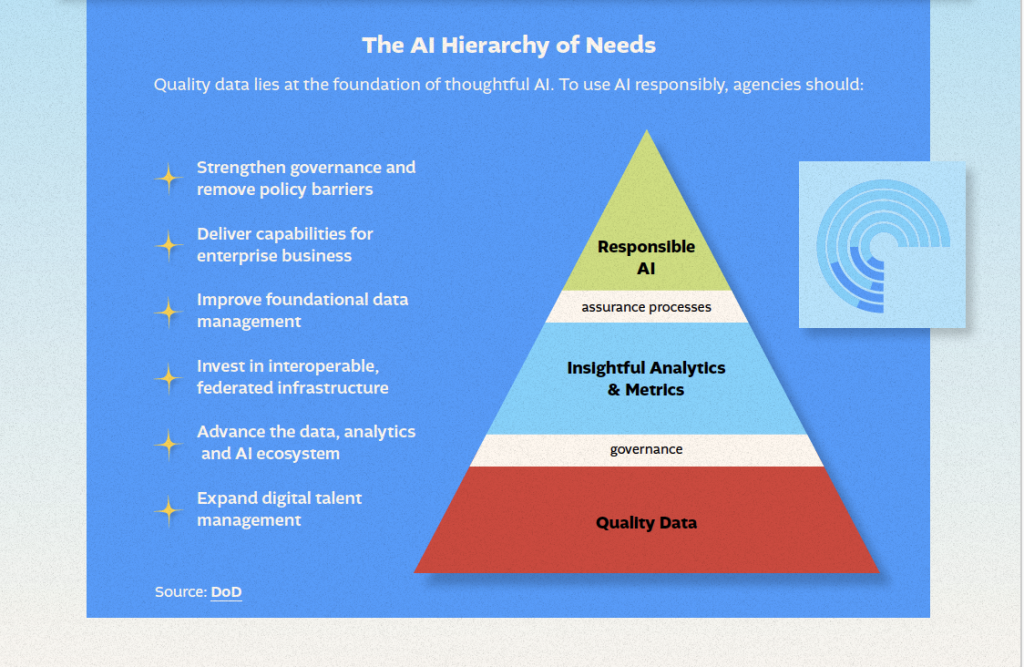Whether you’re planning to use more AI or just want to improve analytics and tighten cybersecurity, good data management must be the foundation for your efforts. In 2024, agencies will need to get their data in shape to make the most of it.
The Federal Data Strategy, released in 2018, set high-level goals for using and handling data. Since then, agencies including the Department of Defense (DoD) have developed their own policies to implement those goals.
DoD based its 2020 data strategy on eight guiding principles that can serve as a useful model for other organizations in creating their own policies. Here are ways to carry out each principle.
Data as a strategic asset
- Leverage data for both immediate and lasting benefits.
- Understand the value of your data.
Collective data stewardship
- Ensure accountability throughout the data life cycle.
- Assign specific data management-related roles.
- Set uniform security and privacy policies.
Data ethics
- Consider potential individual/societal impacts in data collection, use and storage.
- Design for compliance.
- Automate information management life cycle, data security and end-to-end records management.
Enterprisewide data access and availability
- Promote interoperability and appropriate data access and sharing.
- Adopt common data standards.
- Make data understandable and put it in context.
Data fit for purpose
- Minimize sources of unintended bias.
- Establish consistent practices for removing expired data.
- Set quality standards and weed out low-quality data.
Data collection
- Collect data electronically when it’s created.
- Maintain an ongoing record of how and when the data is processed and revised.
Data for AI training
- Rethink data architecture to accommodate both structured and unstructured data.
- Establish rules for tagging unstructured data to allow for efficient AI searches.
- Label sensitive and private data to prevent inappropriate access.

According to DoD, data should be:
- Visible: Easy for users to locate.
- Accessible: Simple to retrieve.
- Understandable: Clear in terms of content, context and applicability.
- Linked: Connected to related elements.
- Trustworthy: Used with confidence.
- Interoperable: Sharing a common representation.
- Secure: Protected from unauthorized use or manipulation.
This article appears in our guide, “A Fresh Look at Data.” For more ideas about how to use data in important and innovative ways, download it here:





Leave a Reply
You must be logged in to post a comment.